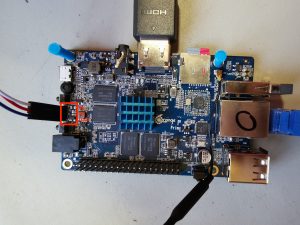I didn’t get much of a chance to work through the home automation tutorial at linux.conf.au 2019 because I ended up helping others in the room get their Orange Pi is booting. Now that things have settled down after the conference, I’ve had a chance to actually do some of the tutorial myself. These are my notes so I can remember what I did later…
Pre-tutorial setup
You need to do the pre-tutorial setup first. I use Ubuntu, which means its important that I use 18.10 or greater so that st-link is packaged. Apart from that the instructions as written just worked.
You also need to download the image for the SD card, which was provided on the day at the conference. The URL for that is from github. Download that image, decompress it, and then flash it to an SD card using something like Balena Etcher. The tutorial used 32gb SD cards, but the image will fit on something smaller than that.
hassos also doesn’t put anything on the Orange Pi HDMI port when it boots, so your machine is going to look like it didn’t boot. That’s expected. For the tutorial we provided a mapping from board number (mac address effectively) to IP address allocated in the tutorial. At home if you’re using an Orange Pi that isn’t from the conference you’re going to have to find another way to determine the IP address of your Orange Pi.
The way we determined MAC addresses and so forth for the boards used at the conference was to boot an Armbian image and then run a simple python script which performed some simple checks of each board by logging into the board over serial. The MAC addresses for the boards handed out on the day are on github.
An Aside: Serial on the Orange Pi Prime
As an aside, the serial on the Orange Pi Prime is really handy, especially with the hassos image. Serial is exposed by a three pin header on the board, which is sort of labelled:

Noting that you’ll need to bend the pins of the serial header a little if you’re using the shield from the conference:

The advantage being that suddenly you get useful debugging information! The serial connection is 115200 baud 8N1 (8 data bits, no parity, 1 stop bit) by the way.

The hassos image used for the conference allows login as root with no password over serial, which dumps you into a hass interface. Type “login” to get a bash prompt, even though its not in the list of commands available. At this point you can use the “ip address” command to work out what address DHCP handed the board.
The actual on-the-day work
So at this point we’re about as ready as people were meant to be when they walked into the room for the tutorial. I’ll write more notes when I complete the actual tutorial.
Pingback: 1-Wire home automation tutorial from linux.conf.au 2019, part 2 – Made by Mikal
Pingback: 1-Wire home automation tutorial from linux.conf.au 2019, part 3 – Made by Mikal